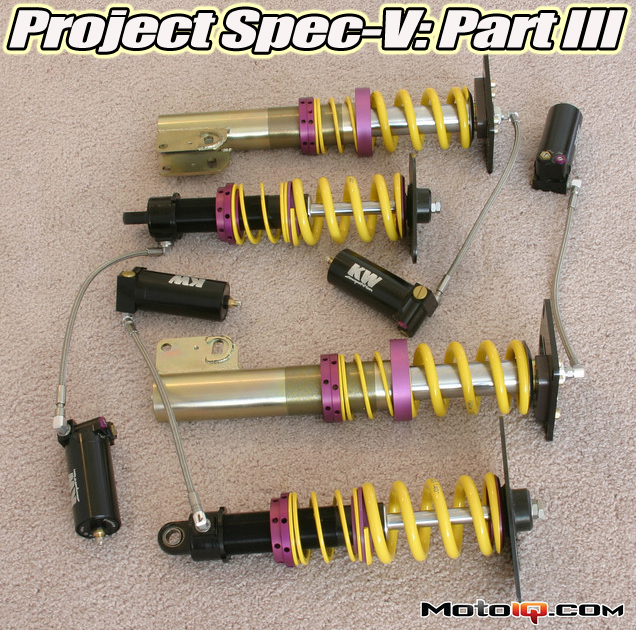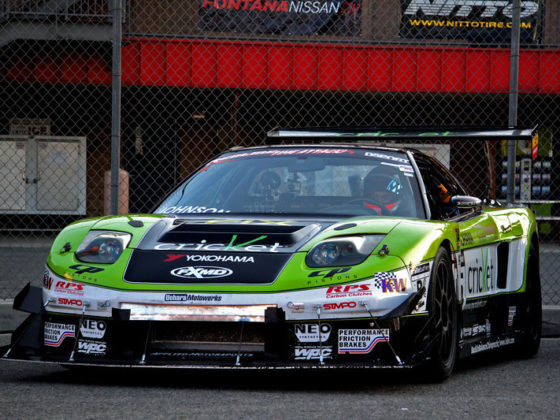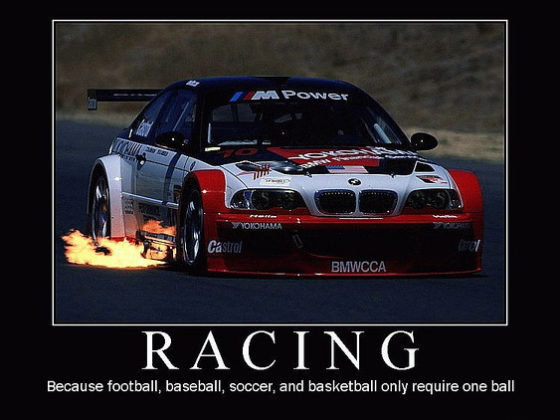,
The high speed compression adjustment controls how the shock reacts to big bumps and holes such as the impacts the suspension might receive when hopping FIA curbs or dipping a wheel off the track into a hole. High speed adjustment also slightly affects the cars response to a drivers initial input under turn-in. High speed shaft velocities are defined as being above 6-8 inches per second. The most common use for high speed adjustment is to control bottoming of the chassis under bump. Not enough high speed compression and the car blows though its travel when hitting bumps bottoming harshly. Too much and the car nibbles around losing traction. High speed compression adjustment is not felt by the driver much unless it is way off.
 |
| The adjusters for the high and low speed compression damping are found on the remote reservoir, this is good as it allows the adjusters to be easily reachable, important for quick adjustment in pit lane. |
The rebound damping adjustment affects mostly the low speed range but it has some effect across the velocity scale. Rebound damping affects the chassis responsiveness, mostly from the mid turn to the exit. Rebound damping adjustment greatly affects the chassis bump response. Not enough rebound damping and the car feel floaty and boat like. Too much and the chassis will pack down in sequential bumps riding harshly and loosing traction. Rebound adjustment is greatly feelable by the driver.
The KW coilovers have a short body so the car can be built with a low ride height, good for aerodynamics and center of gravity location, without sacrificing wheel travel. With our short struts our race car has the same amount of bump travel as the stock car even though it sits 4 inches lower than stock. This is highly important for proper handling.
The KW’s have a short, lightweight, threaded and hard anodized aluminum alloy body with threaded collars to set the ride height and corner weight. We opted to run 700 in/lb front and 900 in/lb rear spring rates and used helper springs to make sure that the springs would never be loose, even under full droop. The springs sit on slip washers which allow them to rotate under compression reducing friction caused by spring kink induced side load.
The KW shocks are a high pressure gas mono tube shock. Monotubes generally are accepted as the best design for high end racing use. This is because they run at a higher pressure to reduce damping fade due to cavitation, completely separate the shock fluid from any sort of damping reducing gas bubbles, have a larger piston and bearing area and displace more fluid in stroke for more sensitivity in the valving, critical for low shaft speed control.




